This strength principle is key to seeing results. But what does progressive overload look like and how do we implement it?
What is Progressive Overload?
Progressive overload is the continual addition of stress placed upon the body over time as the body adapts. As we train, the body adapts to the stress we put on it over time and gets stronger. Therefore, it’s imperative that we continue to add additional stress over time in order to overcome adaptation, gain muscle, and get stronger.
How to Progressively Overload Movements
Various methods of progression can be utilized in order to implement this training principle. Weight on the bar is not the only way to progress. Strength is not solely a measurement of how much weight someone can lift (though the definition does equal max force at one time), but a combination of things that result in increased strength. This could be measured in terms of form, tempo, control, and more.
Do You Need to Add Weight Each Week?
When it comes to progressive overload, adding increased stress over time is key. But does this need to be every week? Not necessarily. In fact, it is recommended to add 10% or less each week if you’re adding additional stress through weight lifted. But, you can also progress by slowing down, adding sets, or attempting to control and make every rep a bit cleaner than the weeks before. All of this can be considered progressing.
Methods of Progressing
-
Increasing the weight lifted
-
Lifting the same amount of weight at a slower tempo
-
Lifting the same amount of weight through a larger range of motion
-
Lifting the same amount of weight with less effort and more control
-
Doing the same amount of work with less rest between sets
-
Adding sets to the workout to increase volume
-
Adding reps to the workout to increase volume
-
Adding a pause at specific portions of the lift with the same weight
-
Lifting the same amount of weight at a lighter body weight
-
Adding frequency (number of workouts in the week) for the same lift
On top of these methods, there are programming methods that can help you continue to progress without necessarily adding load to the bar every single week or month. Utilizing periodization in your training macrocycle will help you to get stronger overtime and overcome plateaus.

Progress is Not Linear
Progress is never going to happen in a straight line. There is little chance you’ll be able to continuously add 5-10 lbs to the bar every week forever and ever. We are human beings and our bodies are complicated. Sleep, stress, nutrition, and more can affect our training outcomes. There are too many variables that go into getting stronger to guarantee a specific strength outcome. But, over time, you will see the trend upward in strength. But there will be weeks where you see plateaus or even occasional decreases in your strength. It is the nature of being human.
Beginner Gains
In the beginning, you’ll be see the fastest increases in your strength. This is partially due to the neuromuscular adaptations and the new neural pathways being developed as you learn how to train and move in new ways. We call these massive gains in strength beginner gains and unfortunately, the rate you get stronger decreases the stronger you get and the longer you train.
Progressive Overload Requires Adaptation
A key thing to remember is that adaptation requires repetition.
In other words, you need to do the same movement for a while in order to see progress. Many programs focus on 4 to 8 week blocks before changing the movements and adding variety to the weekly program. This is because adaptation can only happen when you have time with the same movement. So, changing your workouts every single week with no rhyme or reason is not the way to go if you want to get stronger or gain muscle. Those fitness classes are fun (and there are other benefits to them as well), but unless they are implementing progressive overload you’re not going to get the same result. If you like the classes, consider using them occasionally as a supplement to your regular resistance training program when you want something new and different. Just be sure they make sense with the goals you have in mind so you’re not hindering your progress if you want to get stronger or gain muscle over time.
Factors that Influence Progress
Keep in mind that while we want to see results, it won’t always happen as quickly as we want. Training should be a life-long process that is ultimately successful and enjoyable. If your progress is on the slower side, remember to continue to look back at where you started and look for progress in more than just your strength or aesthetics over time. Lifting with better form and more control, mastering a skill, owning portions of the lift you struggled with before, or being able to handle more frequency or volume are all signs of progress. Improving your mood, having more energy, and feeling more confident are also huge wins when it comes to training.
If you’re paying attention to all of that and you still feel like you’re not improving over time, pay attention to the various factors that can impact your progress:
- Amount and quality of sleep
- Nutrition
- Hydration levels
- Stress levels
- Hormonal cycles
- Fatigue or overtraining
Undertraining, or not progressing or using enough intensity as you progress
If you’re interested in learning more, be sure to listen to our podcast episode on progressive overload.


